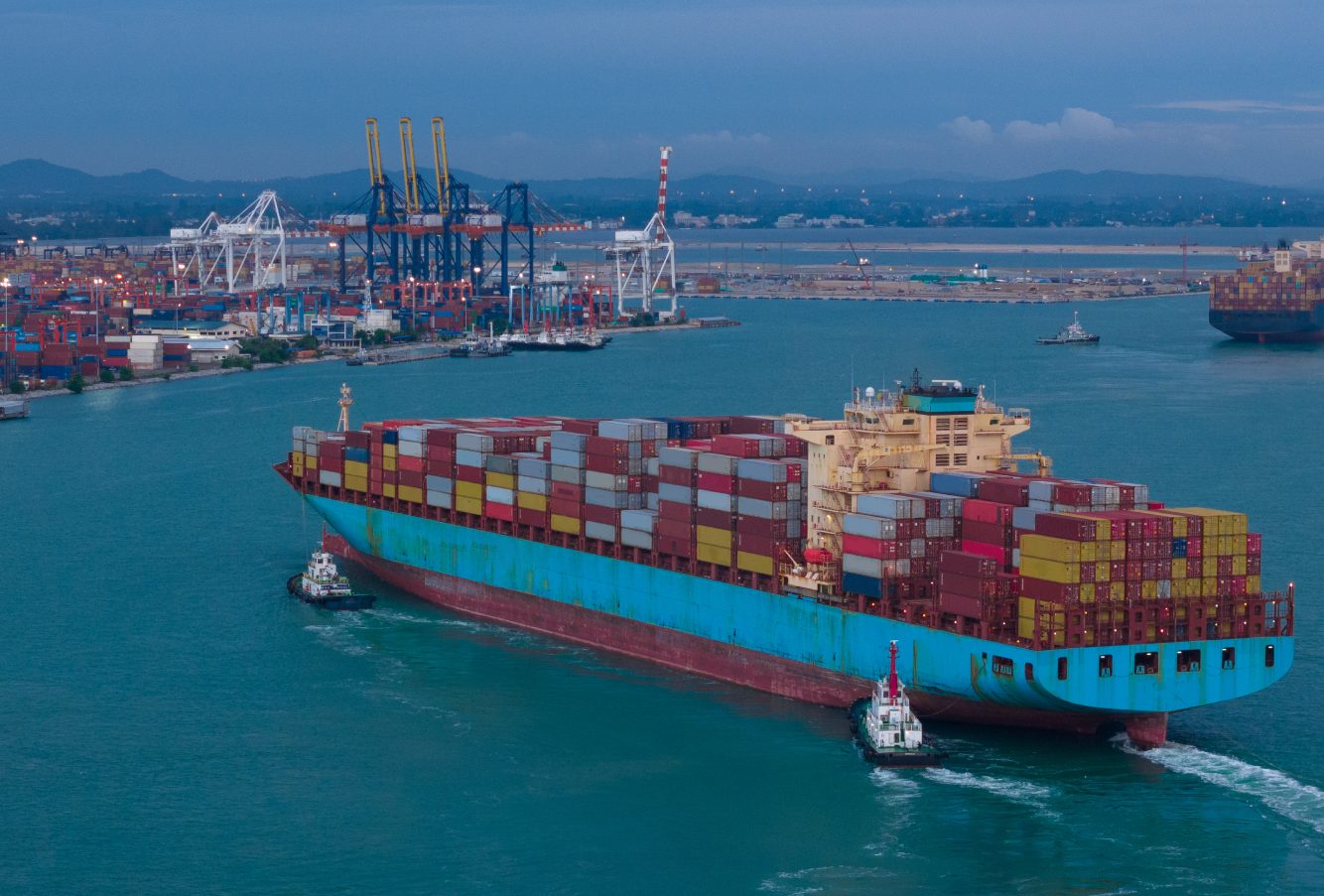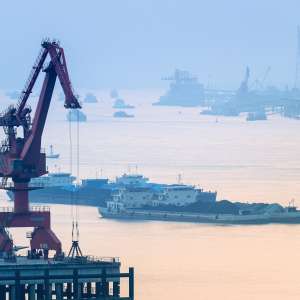A Comprehensive Guide to Shipping from Bayuquan Port to Vietnam
Latest update on 16 August, 2024 by Angelina Pang– Marketing Analyst at FreightAmigo
Shipping from Bayuquan Ocean Port to Vietnam is a crucial part of the logistics chain for businesses looking to expand into Southeast Asian markets. In this comprehensive guide, FreightAmigo provides an in-depth look at the shipping process, from documentation and route selection to cost management and logistics shipping from Bayuquan Port to Vietnam. With Vietnam’s growing economy and strategic location, understanding the nuances of this shipping route can enhance your business’s efficiency and market reach. Whether you’re a seasoned exporter or new to international trade, this guide will equip you with the knowledge needed for successful shipping operations.
Want to Instantly Compare International Express, Air, Sea, Rail Freight And Truck Logistics Management Solutions To Control Transportation Costs?
Shipping Options from Bayunquan Ocean Port to Vietnam
For businesses aiming to transport goods from Bayuquan Ocean Port to Vietnam, several shipping alternatives are available, each offering distinct advantages. Maritime freight stands out as a cost-effective solution for voluminous, non-urgent consignments, while air cargo ensures swift delivery times, making it ideal for time-sensitive or perishable shipments. Trucking services may also be a viable option, particularly for destinations near the land borders shared by Vietnam and China.
Shipping from Bayuquan Port to Vietnam by Less-than-Container Load (LCL) or Full Container Load (FCL)
When shipping via sea freight, businesses have the option to choose between consolidation (Less than Container Load, or LCL) and full container load (FCL) services. The decision primarily hinges on the volume of goods being transported.
LCL
Less-than-container load, or LCL shipping, is economical for smaller shipments that cannot fill an entire container. Standard container sizes include 20-foot containers (with a capacity of 33 CBM), 40-foot containers (67 CBM), and 40-foot high-cube containers (76 CBM). Generally, LCL is recommended for shipments under 13-14 CBM, as booking a full container may be more cost-effective for larger volumes, even if it is not filled.
Advantages of LCL Shipping
- Cost-effective for smaller shipments between 2 and 13-14 CBM
- Accommodates a wide range of products, unlike air freight, which has stricter limitations
Disadvantages of LCL Shipping
- Higher cost per cubic meter compared to FCL shipments
- Mandatory palletization of goods for consolidation and deconsolidation processes
- Additional handling and loading/unloading fees
FCL
FCL shipping refers to booking an entire container (20-foot or 40-foot) for a single consignee. This option becomes more viable for larger shipment volumes, typically exceeding 15 CBM.
Advantages of FCL Shipping
- Cost-effective for larger shipments
- Flexibility in packaging and loading, without mandatory palletization
- Enhanced security, as containers are sealed from origin to destination (unless customs inspection is required)
Disadvantages of FCL Shipping
- Slower transit times compared to other modes of transportation
- Minimum volume requirements, typically 14-15 CBM or higher
Estimated Shipping Costs for Containers from Bayuquan Ocean Port to Vietnam
The cost of shipping a container from Bayuquan Ocean Port to Vietnam can vary significantly based on several factors, including:
- Container size (20-foot or 40-foot)
- Fuel prices
- Dimensions and weight of the cargo
- Shipping company fees
- Origin and destination ports
- Shipping route
As a general guideline, the typical price range for shipping a 20-foot container from the United States to Vietnam is between $850 and $1,530, while a 40-foot container can cost up to $4,500. Here are approximate shipping costs from select countries:
| Country | Cost for 20-foot Container | Cost for 40-foot Container |
| United States | $2,500 | $4,550 |
| Canada | $2,500 | $4,550 |
| China | $850 | $1,550 |
| Spain | €1,150 | €4,550 |
| European Countries | €1,150 | €4,550 |
It’s crucial to note that these estimates represent only the freight charges and do not include additional costs such as pickup and delivery fees, export and import charges, duties, and taxes, which can significantly impact the total shipping cost.
Documentation Requirements from Bayuquan Ocean Port to Vietnam
To ensure a smooth importation process into Vietnam, businesses must comply with the country’s customs regulations and provide the necessary documentation. Vietnam has a complex tariff schedule, and most goods are subject to import fees, with rates varying based on the type of items being imported.
The following documents are typically required for importing to Vietnam:
- Original Vietnam Moving Inventory
- Commercial invoice
- Packing list
- Bill of lading manifest
- Original bill of lading, sea waybill, or airwaybill
- Tax Identification Number in Vietnam
- Importer Registration
- Location of the tariff subheading and commodity
- Vietnam Customs Value Declaration
- Phytosanitary Export Certificate for agricultural products
- Combined Certificate of Value and Origin
- Trade or company patent in Vietnam, stating that the importer is dedicated to importing
- Proof of debt-free status in Vietnam
- Authorization for a customs broker in Vietnam (power of attorney)
- Proof of economic solvency in Vietnam
- Incoterms agreement for importation
Additionally, Vietnam Customs levies import tariffs based on the Cost, Insurance, and Freight (CIF) value of the cargo in container shipments, ranging from 0% to 50%. A value-added tax (VAT) of 0% to 5% is also applicable, calculated on the total import price, including the customs tariff.
However, it’s essential to note that imports originating from the European Union, or the United States may be eligible for tax waivers or reduced rates, subject to international agreements between the respective parties.
Conclusion
Shipping from Bayuquan Port to Vietnam encompasses a multitude of factors, including customs tariffs, taxes, regulatory requirements, and cost analysis. Comprehending these aspects is crucial for a timely and successful importation journey. Partnering with experienced logistics providers, such as FreightAmigo, can prove invaluable in supporting business transactions and ensuring compliance with local regulations.
By leveraging the insights provided in this comprehensive guide, businesses can make informed decisions regarding their shipping strategies from Bayuquan Ocean Port to Vietnam, optimizing their supply chain operations and maximizing cost-effectiveness.
If you are looking for logistics experts, please visit FreightAmigo Page
Read More:
Shipping from Suzhou Port to Vietnam | FreightAmigo
Shipping From Vietnam to Long Beach | FreightAmigo
A Comprehensive Guide to Freight from Fuzhou to Vietnam | FreightAmigo
If you have any inquiries on logistics / supply chain, feel free to contact FreightAmigo now:
Chat with us online | Hotline: +852 28121686 | WhatsApp: +852 27467829










































